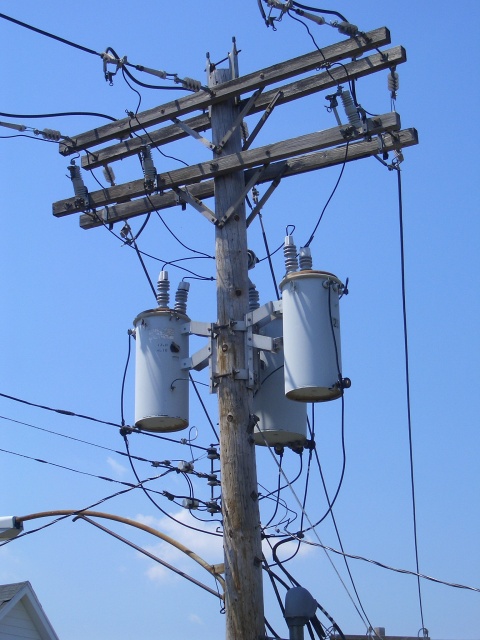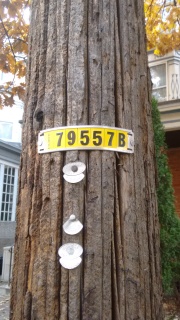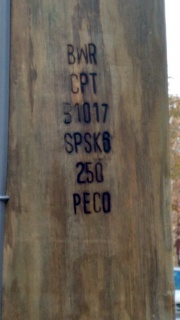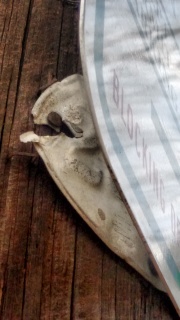Mark Dominus (陶敏修)
mjd@pobox.com

Archive:
| 2025: | JFMAMJ |
| JAS | |
| 2024: | JFMAMJ |
| JASOND | |
| 2023: | JFMAMJ |
| JASOND | |
| 2022: | JFMAMJ |
| JASOND | |
| 2021: | JFMAMJ |
| JASOND | |
| 2020: | JFMAMJ |
| JASOND | |
| 2019: | JFMAMJ |
| JASOND | |
| 2018: | JFMAMJ |
| JASOND | |
| 2017: | JFMAMJ |
| JASOND | |
| 2016: | JFMAMJ |
| JASOND | |
| 2015: | JFMAMJ |
| JASOND | |
| 2014: | JFMAMJ |
| JASOND | |
| 2013: | JFMAMJ |
| JASOND | |
| 2012: | JFMAMJ |
| JASOND | |
| 2011: | JFMAMJ |
| JASOND | |
| 2010: | JFMAMJ |
| JASOND | |
| 2009: | JFMAMJ |
| JASOND | |
| 2008: | JFMAMJ |
| JASOND | |
| 2007: | JFMAMJ |
| JASOND | |
| 2006: | JFMAMJ |
| JASOND | |
| 2005: | OND |
Subtopics:
| Mathematics | 245 |
| Programming | 99 |
| Language | 95 |
| Miscellaneous | 75 |
| Book | 50 |
| Tech | 49 |
| Etymology | 35 |
| Haskell | 33 |
| Oops | 30 |
| Unix | 27 |
| Cosmic Call | 25 |
| Math SE | 25 |
| Law | 22 |
| Physics | 21 |
| Perl | 17 |
| Biology | 16 |
| Brain | 15 |
| Calendar | 15 |
| Food | 15 |
Comments disabled
Wed, 14 Feb 2018
I am almost always interested in utility infrastructure. I see it every day, and often don't think about it. The electric power distribution grid is a gigantic machine, one of the biggest devices ever built, and people spend their whole lives becoming experts on just one part of it. What is it all for, how does it work? What goes wrong, and how do you fix it? Who makes the parts, and how much do they cost? Every day I go outside and see things like these big cylinders:
and I wonder what they are. In this case from clues in the environment I was able to guess they were electrical power transformers. Power is distributed on these poles at about seven thousand volts, which is called “medium voltage”. But you do not want 7000-volt power in your house because it would come squirting out of the electric outlets in awesome lightnings and burn everything up. Also most household uses do not want three-phase power, they want single-phase power. So between the pole and the house there is a transformer to change the shape of the electricity to 120V, and that's what these things are. They turn out to be called “distribution transformers” and they are manufactured by — guess who? — General Electric, and they cost a few thousand bucks each. And because of the Wonders of the Internet, I can find out quite a lot about them. The cans are full of mineral oil, or sometimes vegetable oil! (Why are they full of oil? I don't know; I guess for insulation. But I could probably find out.) There are three because that is one way to change the three-phase power to single-phase, something I wish I understood better. Truly, we live in an age of marvels.
Anyway, I was having dinner with a friend recently and for some reason we got to talking about the ID plates on utility poles. The poles around here all carry ID numbers, and I imagine that back at the electric company there are giant books listing, for each pole ID number, where the pole is. Probably they computerized this back in the seventies, and the books are moldering in a closet somewhere.
As I discussed recently, some of those poles are a hundred years old, and the style of the ID tags has changed over that time:
It looks to me like the original style was those oval plates that you see on the left, and that at some point some of the plates started to wear out and were replaced by the yellow digit tags in the middle picture. The most recent poles don't have tags: the identifier is burnt into the pole.
Poles in my neighborhood tend to have consecutive numbers. I don't think this was carefully planned. I guess how this happened is: when they sent the poles out on the truck to be installed, they also sent out a bunch of ID plates, perhaps already attached to the poles, or perhaps to be attached onsite. The plates would already have the numbers on them, and when you grab a bunch of them out of the stack they will naturally tend to have consecutive numbers, as in the pictures above, because that's how they were manufactured. So the poles in a vicinity will tend to have numbers that are close together, until they don't, because at that point the truck had to go back for more poles. So although you might find poles 79518–79604 in my neighborhood, poles 79605–79923 might be in a completely different part of the city.
Later on someone was inspecting pole 79557 (middle picture) and noticed that the number plate was wearing out. So they pried it off and replaced it with the yellow digit tag, which is much newer than the pole itself. The inspector will have a bunch of empty frames and a box full of digits, so they put up a new tag with the old ID number.
But sometime more recently they switched to these new-style poles with numbers burnt into them at the factory, in a different format than before. I have tried to imagine what the number-burning device looks like, but I'm not at all sure. Is it like a heated printing press, or perhaps a sort of configurable branding iron? Or is it more like a big soldering iron that is on a computer-controlled axis and writes the numbers on like a pen?
I wonder what the old plates are made of. They have to last a long time. For a while I was puzzled. Steel would rust; and I thought even stainless steel wouldn't last as long as these tags need to. Aluminum is expensive. Tin degrades at low temperatures. But thanks to the Wonders of the Internet, I have learned that, properly made, stainless steel tags can indeed last long enough; the web site of the British Stainless Steel Association advises me that even in rough conditions, stainless steel with the right composition can last 85 years outdoors. I will do what I should have done in the first place, and go test the tags with a magnet to see if they are ferrous.
Here's where some knucklehead in the Streets Department decided to nail a No Parking sign right over the ID tag:
Another thing you can see on these poles is inspection tags:
Without the Internet I would just have to wonder what these were and what OSMOSE meant. It is the name of the company that PECO has hired to inspect and maintain the poles. They specialize in this kind of work. This old pole was inspected in 2001 and again in 2013. The dated inspection tag from the previous inspection is lost but we can see a pie-shaped tag that says WOODFUME. You may recall from my previous article that the main killer of wood poles is fungal infection. Woodfume is an inexpensive fumigant that retards pole decay. It propagates into the pole and decomposes into MITC (methyl isothiocyanate). By 2001 PECO had switched to using MITC-FUME, which impregnates the pole directly with MITC. Osmose will be glad to tell you all about it.
(Warning: Probably at least 30% of the surmise in this article is wrong.)
Addendum 20250306
After they cut out those little metal rectangles with the numbers on them, what do they do with the leftover bit?
They nail it to the bottom of the pole to make it easier to see.
[Other articles in category /tech] permanent link








